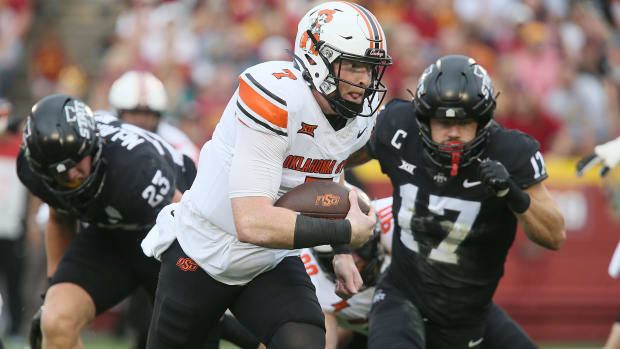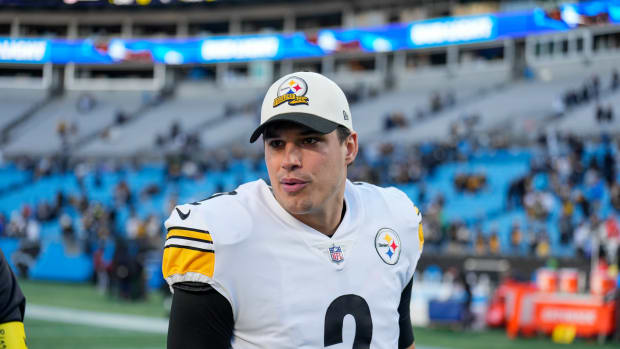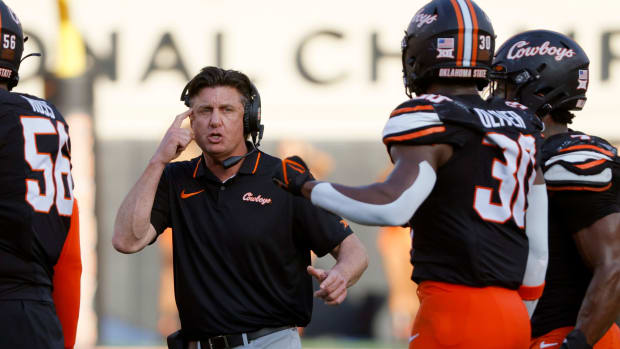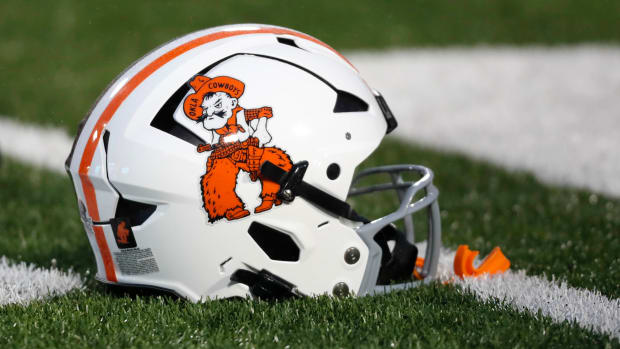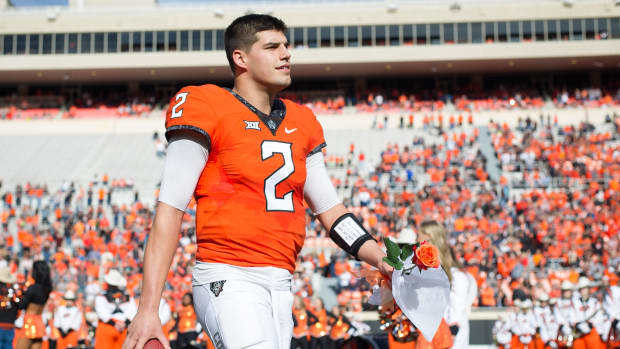The Answer to a College Football Season or Not is Simple, How Bad Do the Players Want to Play?
STILLWATER -- Wednesday the first day of July and I made my way over for the third time since the players returned to the West End Zone of Boone Pickens Stadium. Once, I was there to be tested and the other two times to check the temperature in the facility. Don't be confused. They do take temperatures of everybody that comes into the complex, but I was there to check the temperature of the folks that work and prepare in that building. It would appear that despite the COVID-19 and the recent upheavel of the normal attitude inside the football complex that things are gradually returning to an enthusiastic preseason mode.
Oklahoma State is scheduled to open the season on Thursday, Sept. 3 hosting Oregon State. The last word from Corvallis is the Beavers plan to be there to play.
From my peek into the weight room for football on Wednesday, it would appear the Cowboys plan to be ready as well. A mixture of linemen from both sides of the ball and cowboy backs on offense and linebackers on defense appeared to be getting after it pretty good spread out throughout the weight room.
I went in and conversed with football equipment coordinator Justin Williams. Williams and the sports medicine staff may be absorbing the brunt of trying to get ready for a start to college football inside a pandemic.

Helmets this season will not only have shields like the one above, but also splash guards that cover the lower portion of the face mask.
Pat Kinnison - Pokes Report chief photographer
"We're going to put shields on every helmet and then we have clear splash shield attachment for the bottom," Williams explained when asked about the helmet safety and precautions of playing football in the COVID-19 pandemic. "Now, I'm not sure how we can disinfect a football between the time a quarterback throws it and a receiver catches it."
Williams was being a little sarcastic with that, but honestly, keeping a contact sport like football safe is a total nightmare for the people charged with it and that applies to the NFL, college football, and high school equally.
Sports Illustrated has a story on the difference between pro teams and college teams conducting their season during the COVID-19 pandemic and why there is a different standard.
I fully get the difference in football between the NFL and Division I/Power Five college football like at Oklahoma State and in the Big 12. NFL players are under contract to play the game. Teams have a responsibility to keep players safe and protect them, such as the equipment additions we noted above with Oklahoma State football equipment coordinator Justin Williams.
College athletes are there to play and they too are compensated. The cost of a college education, academic tutoring, room and board, a cost of attendance stipend, equipment and all kinds of gear, and the instruction of the coaching staff, medical care, and strength and conditioning training all adds up.
Let's just say it is a different kind of compensation.
Some of the team site editors from the SI/Maven network pointed out the testing. I can tell them with a testing lab on campus, Oklahoma State has tested frequently and will continue to do so.
Now the publisher at the OU site on the network, All Sooners, John Hoover cited the campus environment. Hoover, in my opinion, is onto something.
"College and professional sports should have different standards for returning to play from the pandemic,: wrote Hoover. "The most fundamental basis for this is that student-athletes are part of a far larger campus community and cannot be sequestered to the extent a professional can sequester its players. As part of the everyday campus community, and as athletes who also have classroom responsibilities, their exposure will be far greater. Also, the athletes everyone thinks of in college—football and basketball players—frequently socialize with athletes from other sports. College sports is just too large, too broad to hold to the same standards as professional sports."
Here is where my prevailing thought comes into play. We will have a college football season on the campuses where the players most want to play the game and are willing to trade out some of the social aspects of college and being a college student-athlete that Hoover wrote of. There are plenty of motives, the motive to maximize NFL potential, the desire to win a championship, the love of playing the game, that adrenaline rush that comes on Saturdays in the stadium. The schools with enough players willing to discipline themselves and give up hanging out at the Student Union, on the campus strip, or just hanging out in the dorm will have the best chance to play on Saturdays. Some schools will make it, some I'm sure won't. I do believe that schools that have the players with that discipline will play and leave the ones that don't behind.
This fall college football truly will get away from being equal. The ones that can play will play without the others. This will not be a sport (business) that will let one school ruin it for the others.

Players and how badly they want to stick together on each campus will decide the fate of college football this fall.
Pat Kinnison - Chief Photographer - Pokes Report
The next two months will tell the tale for many of the universities. Throughout the six-week schedule that the NCAA has approved for the preparation of the start of the college football season, the Oklahoma State campus will gradually become more inhabited. Cowboy football players will need to make the decision of staying in a tight community with their teammates and the coaching and support staff or taking the kinds of chances that can bring coronavirus back to the community and derail the football season.
Oklahoma State, as we mentioned, has their first regular-season game scheduled for Sept. 3, teams could hold mandatory , conditioning and film review for up to eight hours per week from July 11-21. No more than two of those hours could be used for film review.
From July 22-Aug. 4, athletes can participate in up to 20 hours per week (but no more than four hours per day) of “countable athletically related activities.” Those activities can include up to eight hours of weight training and conditioning, up to six hours of walk-thrus using a football and up to six hours of meetings (film review, team meetings, position meetings, one-on-one meetings, etc.).
Fall Practice would begin Aug. 5. That includes the usual “acclimatization period,” followed by 25 on-field practices. It is a total of 29-practice opportunities leading into the first game.
